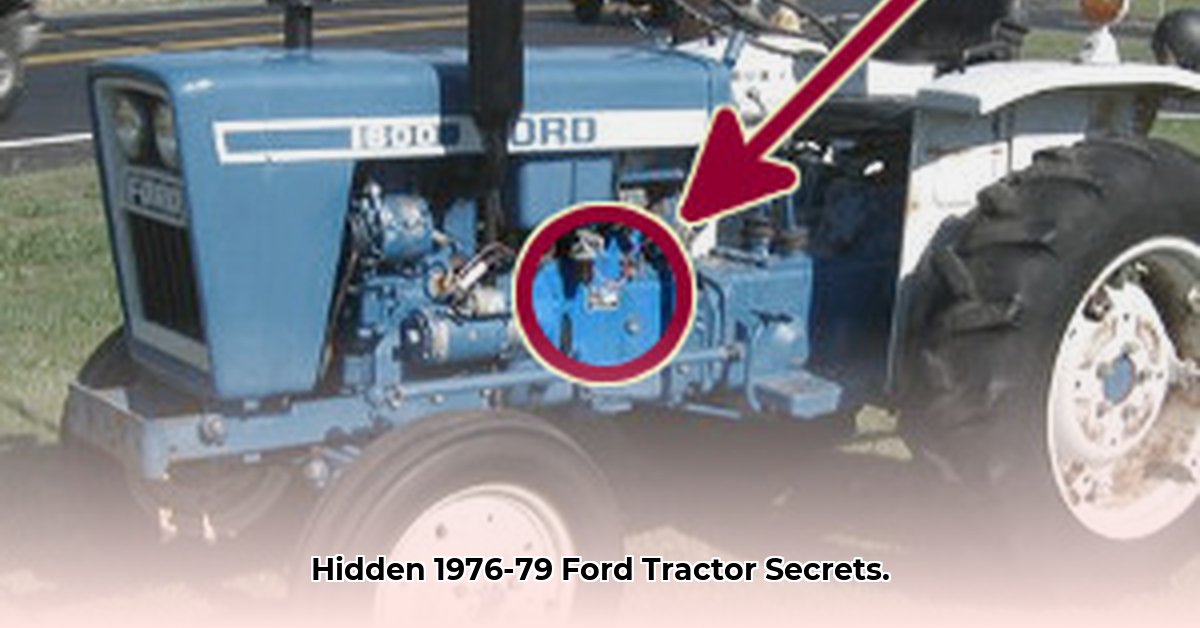
1600 Ford Tractor Specs: A Deep Dive into a Farming Icon
The Ford 1600: a name synonymous with reliability and hard work. Produced between 1976 and 1979, this compact tractor wasn't flashy, but it earned its stripes as a dependable workhorse for countless farmers. Its enduring popularity among collectors and enthusiasts speaks volumes about its quality and charm. But what exactly made the Ford 1600 so special? Let's delve into the specifics, exploring its engine, transmission, dimensions, and more, to understand its enduring appeal. Are you ready to uncover the secrets of this agricultural legend? For more Ford tractor info, check out this helpful resource.
Power Under the Hood: The Dependable Diesel Engine
At the heart of the Ford 1600 lies a robust 1.3-liter, two-cylinder diesel engine. While its 23 PTO horsepower (power take-off, the power used to drive implements) might seem modest by today's standards, it was perfectly adequate for the tasks of smaller farms in the late 1970s. Think of it as a reliable workhorse – maybe not the fastest, but incredibly efficient and dependable. This fuel efficiency was a significant advantage, particularly given the fluctuating fuel prices of the era. And for those needing extra traction in challenging conditions, a four-wheel-drive (4WD) option was available. Did you know that many owners reported incredibly long operational lifespans for this engine with proper maintenance?
Shifting Gears: The Smooth and Simple Transmission
The Ford 1600 featured a nine-speed transmission, providing a versatile range of speeds for diverse farm operations. This wasn't a complex, electronically controlled system; its mechanical simplicity was key to its reliability and ease of maintenance. This straightforward design meant fewer potential points of failure, a significant asset for farmers who needed their equipment to perform consistently. The selection between two-wheel drive (2WD) and four-wheel drive (4WD) further enhanced its adaptability to various terrains and workloads. How many speeds do your modern machines have?
Dimensions and Capacity: Maneuverability and Practicality
While precise dimensions may vary slightly between 2WD and 4WD models, the Ford 1600 was designed for compactness. This was a major draw for farmers with smaller landholdings or fields with limited space. Its nimble maneuverability allowed for easy navigation around obstacles and efficient access to tight areas. This compact design made it a favorite among those needing to easily move between fields or around tighter spaces.
| Specification | Value | Notes |
|---|---|---|
| Engine | 1.3L, 2-cylinder diesel | Simple, robust design known for longevity. |
| Power (PTO) | Approximately 23 hp | Ample power for many small farm applications. |
| Transmission | 9-speed | Offered versatility for various tasks. |
| Drive Type | 2WD or 4WD | Enhanced adaptability for different conditions. |
| Original Price (1979) | Approximately $5,425 | This is a rough estimate; actual prices varied. |
Hydraulics and Implements: Adaptability for Diverse Tasks
The Ford 1600's hydraulic system, while straightforward, offered sufficient lift capacity for common farm implements. Its ease of use simplified the process of attaching and detaching implements, further enhancing its versatility. This adaptability was a significant factor in its popularity, allowing farmers to perform various tasks with a single machine effectively.
More Than Just a Machine: Preserving a Piece of Agricultural History
The Ford 1600 transcended mere functionality; it embodied the values of its time: durability, uncomplicated operation, and straightforward maintenance. This focus on simplicity and reliability is a major reason why it retains a loyal following today. Its enduring appeal stems from a combination of robust engineering, ease of use, and the nostalgia it evokes for a simpler era of farming.
The Ford 1600 Today: A Collector's Dream
Today, the Ford 1600 has become a sought-after collector's item. Its relatively simple design makes restoration a manageable undertaking, attracting enthusiasts seeking a challenging yet rewarding project. Many collectors appreciate its historical significance, robust build, and the sense of connection to a bygone era of agricultural innovation. "It's not just a tractor; it's a piece of history," states John Miller, a restoration expert and collector from the Classic Tractor Restoration Society of America.
Restoring Your 1970s Ford 1600: A Step-by-Step Guide
Restoring a classic Ford 1600 is about more than just aesthetics; it's about preserving a piece of history and celebrating enduring engineering. This process, however, requires careful planning and consideration.
Key Takeaways:
- Prioritize essential mechanical repairs before cosmetic enhancements.
- Embrace sustainable restoration practices, minimizing waste.
- Thoroughly assess the tractor's condition before starting any work.
- Realistic goals are crucial – consider the time and resources needed.
Pre-Restoration Evaluation: A Detailed Inspection
Before you begin, conduct a thorough examination of your tractor. This involves documenting the condition of each system and component: engine, transmission, hydraulics, electrical system, body, and tires. Creating a detailed checklist will prove invaluable throughout the process.
Prioritizing Repairs: Mechanical Functionality First
Put function over form. Focus on getting the Ford 1600 running correctly before addressing cosmetic issues. The following steps outline a logical approach:
- Address critical mechanical problems: Repair any major engine, transmission, or hydraulic issues.
- Replace essential parts: Use original equipment manufacturer (OEM) parts whenever possible or high-quality alternatives.
- Clean thoroughly: Pressure wash to remove accumulated dirt and debris.
Full Restoration vs. Partial Restoration: A Calculated Decision
The extent of your restoration is a personal choice. Full restorations are costly and very time-consuming, requiring specialized skills and knowledge. A more pragmatic approach might involve focusing on restoring essential mechanical components, leaving superficial wear as a testament to the tractor's history.
Sustainable Restoration: Reduce, Reuse, Recycle
Minimize your environmental footprint. Use eco-friendly paints and cleaning products. Whenever possible, reuse existing parts instead of always replacing them.
Sourcing Parts: Building Your Network
Finding parts for a vintage tractor can be challenging. Online forums, classic tractor parts suppliers, and salvage yards are all valuable resources. Networking with other enthusiasts can dramatically improve your chances of success.